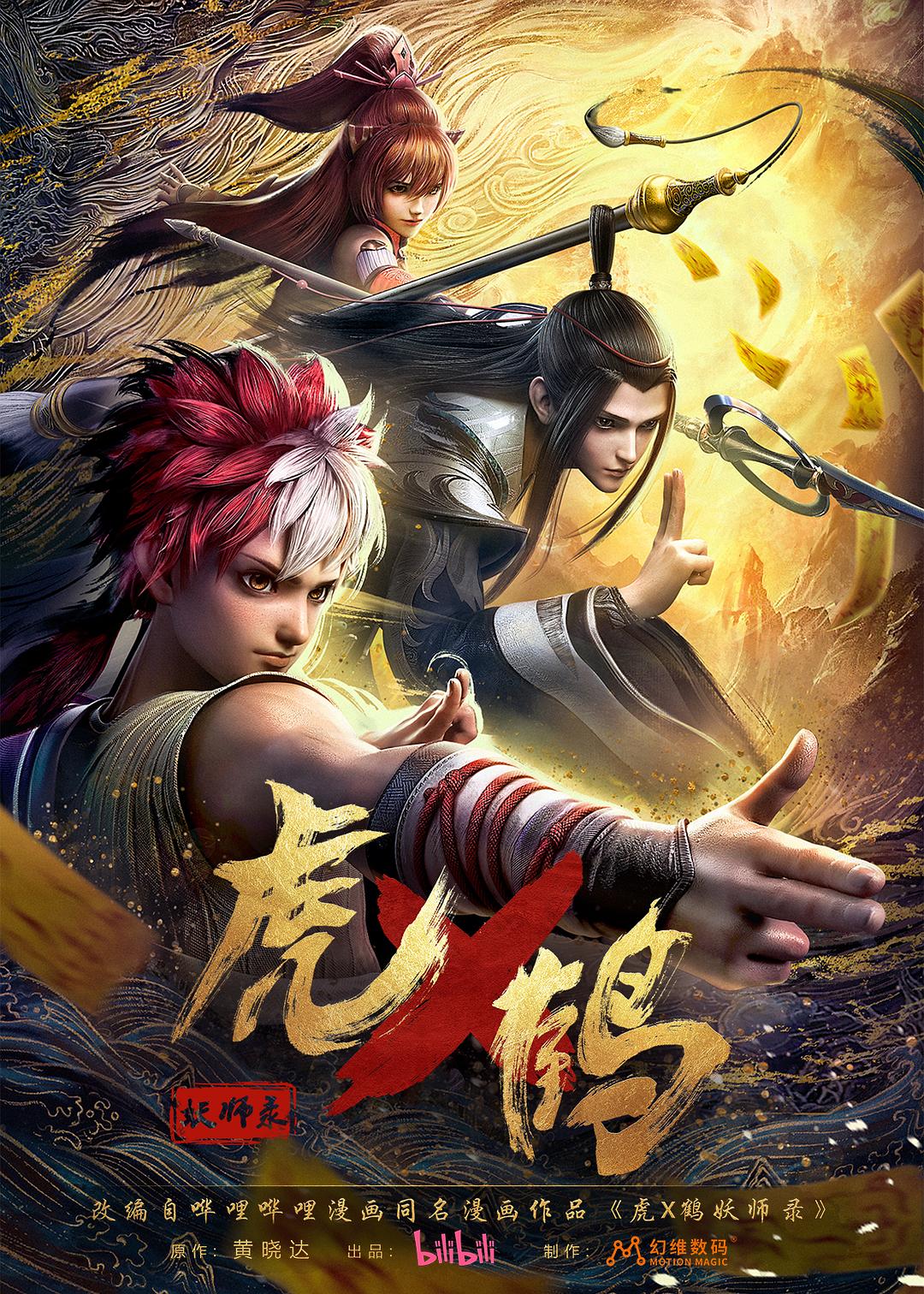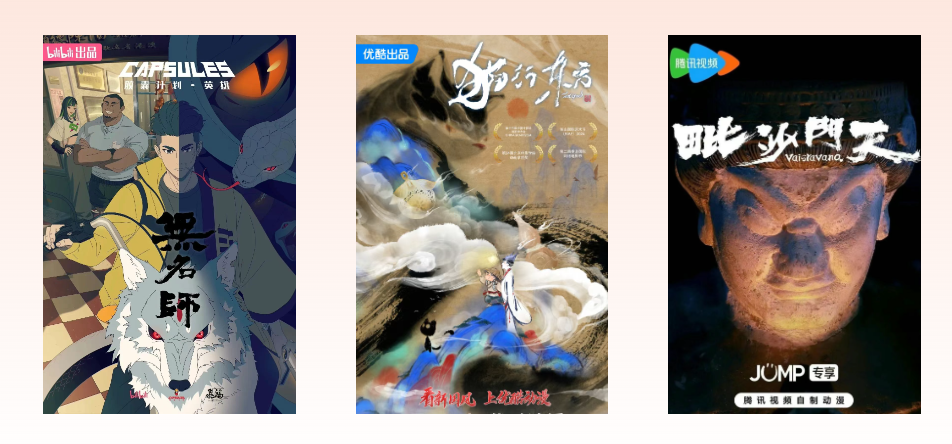
Every year, there are some unpopular domestic animation masterpieces that are of excellent quality but are not popular among the audience. "The Tiger and Crane Demon Master" currently being broadcast on Bilibili is a very representative one in recent times.

The rating of Tiger Crane Demon Master is 9.7 on Bilibili, which is the same as the most popular domestic animations on the site, The Mortal Cultivator's Journey to Immortality and The Shepherd's Divine Tale. However, the number of views of a single episode of Tiger Crane Demon Master is only about one-tenth of these popular works. Every time I click on the comment section of the latest episode, I can always see the audience in the front row sighing, "How can such a well-made animation have so few views?"
The original work of "The Record of the Tiger and Crane Demon Master" is the comic of the same name which has been serialized since 2010. It has a certain popularity among the post-90s and post-00s. A live-action drama was also released in 2023, but unfortunately the plot was overly changed and the reputation was not good.
The story is set 500 years after the peak showdown between humans and demons. In the peak showdown, the human demon master sealed up all the demons with cultivation of more than 500 years, and the remaining demons with shallow cultivation were handed over to the national demon master for handling. Qi Xiaoxuan, the captain of the national demon master, met the mountain wanderer Hu Zi by accident, and the two embarked on a journey of eliminating demons and defending the way together. At the same time, someone inside the national demon master is planning a huge conspiracy, and the sealed demons are also ready to move.

Zhao Bingle, the animation director of "Tiger Crane Demon Master", is best known for his "Fights Break Sphere". The special episode "30 Years' Appointment" directed by him is the best-received one in the "Fights Break Sphere" series, with high-quality action scenes. "Tiger Crane Demon Master" also continues Zhao Bingle's consistent standards, contributing exciting fighting scenes that can be regarded as the ceiling of domestic animation.
Different from many animations that involve flying in the sky and on the ground and frequently launching large waves of attacks, each character in "Tiger Crane Demon Master" has his or her own unique moves, and the excellent animation production makes every battle very interesting.
Qi Xiaoxuan, one of the male protagonists, uses the Ink Control Technique to control ink in battle with a purple-gold wolf-hair brush. He can fight in close combat or from a distance. His fighting style is graceful and agile. He can even use ink to summon cranes for large-scale attacks, with maximum attack power and fashion value.

In order to enhance the visual experience of the battle, the production team also used the "black and white flash" technique in Qi Xiaoxuan's battle. The so-called "black and white flash" is to insert a few frames of black and white drafts in the normal picture, using color contrast and light and dark contrast to enhance the visual impact. It is generally used in the climax of the fighting scene. "Black and white flash" is more common in 2D hand-painted animation. This is the first time I have seen it in 3D animation. The effect is very amazing and perfectly matches Qi Xiaoxuan's style of Yu Mo Jue.
In the later period, after Qi Xiaoxuan's second personality "Yan" awakened, his fighting style changed from graceful and agile to wild and brutal. With one hand, Helian burst out and directly burned all enemies to ashes, which also fits the violent nature of the second personality.

Compared to Qi Xiaoxuan, who was at the full combat level when he first appeared, the other male protagonist Hu Zi started from scratch and upgraded. After absorbing the magic weapon "Ksitigarbha Golden Body", he began to master various spells. Hu Zi played a funny role in the early stage by various hilarious transformations, and his various big moves were also very visually impactful after his strength increased in the later stage.


Except for the protagonist, almost every character in the animation has a set of distinctive fighting moves: the heroine Zhao Xintong has the fastest gun in the world, and can use talismans to continuously teleport and attack; the weapon of the One-Eyebrow Fairy is her hair that can be controlled like tentacles, and she can also wrap herself up and transform into a "King Kong Barbie" form; even the four extra demon masters who appeared in the 9th episode, the animation has separately designed wood, fire and water spells.

The fighting scenes in "Tiger Crane Demon Master" are not only strong in the design of moves, but also in the arrangement of plots and emotional rendering. A representative example is the 11th episode, where the life-and-death duel between Zhao Xintong's father, Mr. Zhao, and the Black Wind Demon is very exciting.
The two began with a fast close combat. Although the speed was extremely fast, each move and style was clearly designed. Even the small details of the spear's deformation were made. The transition between offense and defense was as smooth as mercury flowing on the ground.

After a series of reversals, the battle entered a finale with both visual and emotional impact. After losing an arm, Master Zhao burned all his energy to throw a shot that tore through the void, accompanied by the heroic line "Because there are successors, I can finally give it a try", perfectly conveying the dignity of being a demon master and the satisfaction of being a father to the audience, which made everyone excited.
The 20 minutes of dazzling fight scenes from beginning to end also completed a high level of character creation and paved the way for the subsequent growth of the protagonist group. This episode is undoubtedly one of the best single episodes of domestic animation in 2024.


In addition to the exciting battles, "Tiger Crane Demon Master" also has many impressive performances in other aspects. For example, stiff expressions have always been a long-standing problem in 3D animation, but the characters in "Tiger Crane Demon Master" have vivid expressions comparable to 2D hand-painted ones, and their facial expressions are very contagious. To achieve this effect, it can only be achieved by manual frame-by-frame fine-tuning, which shows the dedication of the production team.


In some climaxes, the production team also contributed dazzling performances, which added a lot of color to the whole work. In the highlight of Qi Xiaoxuan and his sister awakening their second personality, the animation team used a torn butterfly as the introduction, and then added a hand-painted black and white close-up, making this scene full of indescribable oppression, setting the atmosphere for the appearance of the second personality later.

It can be seen that the production team did not stop at copying the original work, but tried to make full use of the expressive power of animation to create a work that surpasses the original.
Since the production level of "Tiger Crane Demon Master" is so excellent, why is the number of views not good? Putting aside the popularity of the original work and the promotion of the animation, the biggest problem is that the plot is slow and lacks novelty.
Whether it is a novel, animation or TV series, today's audiences prefer to throw out the core suspense and conflict at the beginning, and then unfold the main line all the way. As a comic that started serialization in 2010, the narrative method of "Tiger Crane Demon Master Record" is more similar to the long-form animation of the previous generation: in the early stage, the characters are established and the world view is explained through unit dramas, and as various forces appear one by one, the hidden conspiracy and main line are revealed.
For today's audiences, this pace is too slow, especially considering that this is a weekly animation. If an animation today cannot grab the audience's attention in the first three episodes, it is basically a failure. If this slow-burning narrative method is to be adopted, then the world view, characters, and unit dramas must be novel enough to attract the audience through the early stage of the foreshadowing and follow the main plot.
However, "Tiger-Crane Demon Master" is not innovative in any aspect: the worldview is the common fantasy and the opposition between humans and demons; the characters are the classic combination of brainless and unhappy, and Hu Zi, who is in charge of the comedy, often makes people feel too stupid and unlikable; the early unit dramas are also routine monster-killing and leveling up, and the story can only be said to be unsatisfactory.

It will not be until the 9th episode when the Black Wind Demon appears that the animation will reach its first climax and the world view will be further expanded. How many passers-by have the patience to follow it to this point?
Even worse, "Tiger Crane Demon Master" and B station's S-level new show "Shepherd God's Tale" were aired right after each other. As the first few episodes were not eye-catching enough, the audience's attention and B station's publicity were focused on "Shepherd God's Tale" which was aired later, so the popularity of "Tiger Crane Demon Master" was naturally low.
Fortunately, with the development of the later plot and the popularity of the exciting fighting scenes, coupled with the recommendation of some B station UP masters, the popularity of "Tiger Crane Demon Master" has also warmed up recently. For new viewers, now is probably the best time to get into the pit. You can skim through the slow-burning foreshadowing in the early stage and quickly enter the climax to enjoy. If you like the theme of hot-blooded fighting, then "Tiger Crane Demon Master" is definitely a masterpiece not to be missed.


